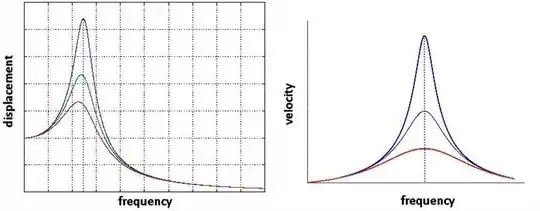I am simulating the transient response of a mass-spring-damping system with friction. The excitation is given in the form of a base acceleration.
What I am not sure about is: can the friction change the resonance frequency of the system or will it affect only the response amplitude?
My first guess was that friction, being an external force, cannot change the resonance frequency of the system. What can happen is that there is no motion because the mass is sticked due to static friction, but if there is motion then the resonance frequency remains the same.
Then I saw that friction can be expressed as an equivalent damping as
$$c_{eq} = \mu N sign(\dot{x})$$
thus actually changing the natural frequency since it is expressed as
$$\omega = \omega_n \sqrt{1-2 \xi^2}$$
The fact is that the use of the equivalent damping is just an approximation to introduce the effect of friction into the equation of motion, is it not?
